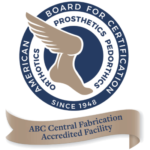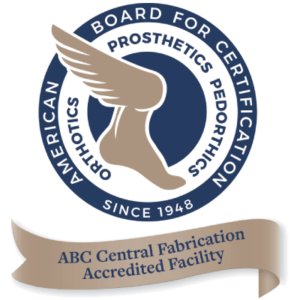What are a few common questions patients usually ask about prosthetics and orthotics?
Wearing an artificial limb can be daunting, and we are sure your patients sometimes have a million questions about prosthetics and orthotics racing through their heads. So, we answered some of the frequently asked questions from about orthotics and prosthetics for you, so you can better explain the answers to your patients.
What’s the difference between a prosthetic and an orthotic?
Everyone knows what a prosthetic is, but only a few have heard about orthotic devices. While they are essential in helping an individual regain mobility, there is one significant difference between the two. Prosthetics are artificial limbs designed to replace a missing extremity.
Meanwhile, , orthotics are devices to enhance or correct a limb or a deformity.
How Do I know if I need a prosthetic leg?
Your patients will consult you first. You can then consult our team who will tell you everything you need to know about the right prosthetics for your patients. Not everyone is a candidate for prosthetic fabrication. We must consider if there is remaining tissue to serve as a cushion between the bone and the device. We also must check the limb’s range of motion and the condition of the healthy limb.
How long before I receive my prosthetic?
Your office will receive artificial limbs between two weeks to a month after the measurements and casting. An orthotic or prosthetic device will also take two weeks to fabricate from our central fabrication unit.
Should I Consult with a Therapist About Prosthetics?
It’s always good to talk to someone to air out misgivings and fears related to prosthetics or orthotics.
Some people are wary about the appearance of their artificial limbs. But we have s spray skins that will mimic skin pigment, resulting in realistic-looking legs or arms.
How Much Do Prosthetic and Orthotic Devices Cost?
The cost depends on the amount of work and the type of device you need. However, we can also refer your patients to organizations that offer financial assistance to amputees to regain mobility.
How long before Patients adjust to artificial limbs?
Each individual responds differently to prosthetics or orthotics. However, we recommend that your patients wear them regularly and only take them off when they go to bed. Most people, however, would get accustomed to their new life in a few weeks. Wearing the device quickly becomes second nature to them.
Are there residual side effects from wearing prosthetics long-term?
Some individuals with “above knee“ and “below knee“ prosthetics have reported back pain, hip pain, and muscle strains. The higher the amputation, the greater the risk of developing some issues.
Fortunately, these issues can be corrected when patients consult with a physical therapist or a physician. Also, a well-fitted prosthetic design will minimize these problems. The excellent news about prosthetics is that most individuals no longer feel the “phantom limb” or phantom pain syndrome.
If you have more questions about prosthetics and orthotic solutions, don’t hesitate to contact Grace Prosthetic Fabrication, Inc. at 1-800-940-5347 or 1-727-842-2265.






